|
Spring in South Louisiana is a vibrant season, filled with warm weather, blooming flowers, and the return of greenery. However, it also marks the return of various pests that can become nuisances to homeowners and gardeners alike. Understanding which pests to look out for during this season is crucial for effective pest control and ensuring your outdoor activities remain enjoyable. This blog post will guide you through the common pests that emerge in South Louisiana during spring and offer tips on managing them. Termites
South Louisiana is notoriously known for its termite activity, particularly in the spring when these pests swarm to start new colonies. The warm, humid climate of the region provides an ideal environment for Formosan and subterranean termites, which are particularly destructive. These termites can cause significant damage to homes and other structures, often unnoticed until it's too late. To prevent termite infestation, homeowners should:
Mosquitoes The spring rainfalls in South Louisiana create perfect breeding grounds for mosquitoes. These pests are not only annoying but can also pose health risks by transmitting diseases such as West Nile Virus and Zika Virus. To combat the mosquito population, individuals can:
Ants As the ground warms up in spring, ant activity increases. Fire ants, in particular, are common in South Louisiana and can deliver painful stings. Carpenter ants, which burrow into wood to create their nests, can also be a problem, potentially damaging wooden structures in and around your home. To deter ants, consider the following:
Rodents Rodents, such as mice and rats, may seek shelter in homes as they emerge from their winter hiding spots. These pests can damage property, contaminate food, and spread diseases. To prevent rodent infestations, homeowners should:
Cockroaches Cockroaches thrive in the warm and moist environment that spring in South Louisiana offers. These pests can enter homes in search of food and water, potentially spreading bacteria and allergens. To keep cockroaches at bay:
Tips for Managing Spring Pests in South Louisiana Managing pests requires a combination of preventative measures and timely action. Here are some additional tips to help keep your home pest-free:
Spring in South Louisiana is a beautiful time of year, but it also brings challenges in the form of various pests. By staying vigilant and implementing effective pest control measures, you can enjoy the season without the nuisance and potential harm these pests can cause. Remember, the key to pest management is prevention, early detection, and appropriate action.
0 Comments
Discovering rodents in your home can be unsettling, to say the least. These unwelcome guests not only pose a health risk by spreading diseases but can also cause significant damage to your property. Knowing the signs of a rodent infestation is crucial to addressing the problem early and effectively. In this comprehensive guide, we will explore how to detect the presence of rodents in your home, covering everything from physical evidence to preventative measures. 1. Identifying Rodent Presence
Rodents, including rats and mice, are not just a nuisance but also a health hazard. They can contaminate food, spread diseases, and cause structural damage to your home. Here are some key indicators that you might have rodents living with you: Droppings: One of the most obvious signs of a rodent infestation is their droppings. Rat droppings are typically dark, shiny, and about ½ inch in length, while mouse droppings are smaller, about ¼ inch, and pointed at the ends. You’re likely to find these near food packages, under sinks, along baseboards, or in drawers and cupboards. Gnaw Marks: Rodents have strong front teeth that grow continuously and will gnaw on almost anything to keep them trimmed. Look for chew marks on food packaging, furniture, wires, and even walls. These marks can also indicate the size of the rodent, with larger gnaw marks pointing towards rats and smaller marks indicating mice. Strange Noises: Hearing scratching or scurrying sounds, especially at night when rodents are most active, can be a sign of an infestation. These sounds are often heard coming from the attic, inside walls, or under floorboards. Nests: Rodents nest in warm, secluded areas using shredded paper, fabric, or dried plant matter. Check in hidden areas like the backs of cabinets, inside boxes stored in garages or basements, and in insulation. Tracks and Rub Marks: Rodents leave footprints and tail marks in dusty environments. You might also notice grease marks along walls or baseboards, which are caused by rodents' oily fur coming into contact with surfaces as they travel along their regular paths. 2. Understanding the Health Risks Rodent infestations are not just a matter of property damage; they pose significant health risks. Rodents can carry diseases such as hantavirus, leptospirosis, lymphocytic choriomeningitis (LCMV), Tularemia, and the plague, which can be transmitted to humans directly through contact with rodent feces, urine, saliva, or indirectly through ticks, mites, or fleas that have fed on an infected rodent. 3. Preventing Rodent Infestations Prevention is key to keeping rodents out of your home. Here are some effective strategies: Seal Entry Points: Inspect your home for any cracks, holes, or gaps larger than a dime. Pay special attention to areas where utilities and pipes enter the home. Seal these openings with steel wool, caulk, or a combination of both to deter rodents. Proper Food Storage: Store food in airtight containers and avoid leaving pet food out overnight. Regularly dispose of garbage in tightly sealed bins. Declutter and Clean: Regular cleaning and decluttering reduce hiding spots for rodents and make it easier to spot signs of an infestation. Keep storage areas well-organized and use plastic bins instead of cardboard boxes. Outdoor Maintenance: Trim vegetation away from the exterior of your home to eliminate shelter for rodents. Store firewood at least 20 feet away from the house and keep it elevated off the ground. 4. Dealing with an Infestation If you suspect you have a rodent problem, it’s important to act quickly. You can set traps in strategic locations around your home. There are various types of traps available, including snap traps, electronic traps, and live traps. Bait the traps with peanut butter, chocolate, or nuts, which are attractive to rodents. Check and reset the traps regularly. For larger infestations or if DIY methods fail, it may be necessary to call in professional pest control services. Professionals can offer more comprehensive solutions, including identifying and sealing entry points, setting up a targeted trapping program, and providing advice on preventing future infestations. 5. Conclusion Detecting and dealing with rodents in your home requires vigilance and prompt action. By recognizing the signs of an infestation, understanding the risks, and implementing preventative measures, you can protect your home and family from the dangers and nuisances that rodents present. Remember, the key to controlling rodent populations is prevention, but should you find yourself facing an infestation, there are effective methods and resources available to help you get rid of these unwelcome guests. "Don't let the bed bugs bite." You likely heard that phrase when you were a kid, and you might have told your own children the same thing. It can seem like just a cute saying until you experience bed bugs yourself for real. An infestation is a miserable experience that leaves you sleep-deprived and often covered with itchy welts. That's why routinely looking for early signs of bed bugs and having a professional deal with them right away is so important.
Bed bugs used to be a problem only in developing countries, but in the past few years these annoying pests have traveled throughout both the United States and Canada as well as in Europe. They can hop from a hotel bed to your suitcase or other items, so you end up carrying them home or to another hotel without even realizing it. What Are Bed Bugs? Bed bugs are tiny parasitic insects with the Latin name Cimex lectularius. They can range from 1 millimeter long to as large as 7 mm, about the size of Lincoln's head on a penny. Wingless and reddish-brown, these insects drink the blood of animals such as humans and other mammals or birds while they sleep. A bed bug is shaped like a flat disk when it hasn't eaten. A few hours after it has gorged on blood, it swells in size and looks bright red. Then after a few days, it flattens out again. Bed bugs typically hide in bedrooms or other places where people sleep. You can come across infestations on cruise ships and dorm rooms as well as on trains and buses. Bed bugs scurry from the light and tend to hide in mattresses and box springs. You can also find them lurking in crevices and cracks as well as behind wallpaper or any clutter around the bed. They'll even hide on headboards and dresser tables. Although bed bugs can travel up to 100 feet in a single night, they usually hide within a few feet of the bed. What Are Some Early Signs of Bed Bugs? If you're worried that you may have an infestation, you can look for these early signs of bed bugs. 1. Bite Marks on Your Body When bed bugs bite you, they inject both an anesthetic and an anticoagulant into your bloodstream. You never even realize you're being bitten, and the bite marks don't show up for hours or even days later. Sometimes you go to bed feeling fine and then wake the following morning with itchy marks on your body. When it does appear, a bed bug bite will resemble a mosquito or other insect bite. It will be red and swollen, and it could also itch, just like a mosquito bite. The bites will either be in random spots or in a straight line on your body. Bed bugs typically bite your neck and face as well as your hands and any other part of your body that's exposed in the night. Keep in mind that you may be one of those fortunate few who don't have a reaction to bed bug bites. To keep your bedbug problem from becoming a major infestation, regularly look for these other early signs of bed bugs. 2. Bed Bug Exoskeletons on Your Mattress Another sign of bed bugs is tiny exoskeletons on your mattress or box springs. Like all insects, bed bugs have their skeleton on the outside of their skin and molt it periodically when growing. When bed bugs become adults, they lay approximately five eggs a day. These eggs are about the size of the head of a pin and are pearly white in color. After five days, the eggs develop eyespots. They hatch within four to 12 days. After a bed bug egg hatches, the nymph, whitish-yellow in color, takes a blood meal and turns red as it grows. As it gets bigger, it sheds its exoskeleton, molting into an older stage of a bed bug larva. Bed bugs go through five nymphal stages before they finally become adult bed bugs. In the process, they shed plenty of exoskeletons that you may find the remains of. 3. Bed Bugs Hiding on Your Mattress or Box Springs Bed bugs hide from the light, so look for them near the edge of your mattress. You can usually find them sitting along the ribbing line, so inspect the top of the ribbing for early signs of bed bugs. They can also lurk in the corners and underneath the patches on your mattress. While bed bugs can be on your mattress, their favorite place to hide is in the box springs. Stand your box springs up so that the underside is facing you. Take a flashlight and go about the perimeter of the box spring. Bed bugs will scurry from the light. Examine where the mattress's dust cloth is stapled to the frame. That's a common area where bed bugs like to hide underneath. These insects will also get behind the plastic corner pieces of your box springs. Check all the way around the perimeter for bed bugs. You can also take the dust cloth off and inspect the wood frame underneath. Keep in mind that mattresses and box springs are heavy, so get help if you're not strong enough to lift these yourself. 4. Black or Rusty-Colored Spots More early signs of bed bugs to look for in addition to the insects themselves are their excretions. Because bed bugs live on a diet of blood, they have to excrete what's undigested. It comes out in a semi-liquid form that you can easily see. Bed bugs feed every five or so days, so look for small spots that are black or rusty brown. They'll be about the size of a pinpoint and will have a smooth feel to them. You may find these spots everywhere you would find the bedbugs themselves. Look for the excretion stains in these areas:
The fecal matter can also look like mold, so study it carefully. 5. A Musty, Sometimes Sweet Odor Bed bugs send signals to each other by producing pheromones. These special chemicals have a sweet smell similar to raspberries or almonds that is often overpowered by other unpleasant bed bug smells such as fecal matter and other dead bed bugs. Add in their shed exoskeletons, and you get a musty smell that’s a lot like moldy laundry or dirty shoes. Be aware that by the time you can smell the bed bugs, you have a serious infestation on your hands, and you’ll probably be able to see the bed bugs as well as smell them. 6. Insomnia or Anxiety When you sleep in an area that's infested with bed bugs, you can suffer from stress and paranoia as well as lose sleep. Live with bed bugs long enough and you can develop insomnia. That’s why it’s crucial to regularly inspect for signs of bed bugs and take care of the problem right away. What Should I Do if I See Early Signs of Bed Bugs? Contact an exterminator as soon as you see early signs of bed bugs. The longer you wait, the greater the infestation will become and the more miserable you will be. 1. Remove and Wash the Bedding Strip your bed and then wash your sheets and blankets in hot water. Then dry them individually in a hot dryer for a full cycle. The heat will kill both the bed bugs and their eggs. 2. Ask the Exterminator How To Prepare for Spraying The exterminator may ask you to remove the bedding and lay both the mattress and box springs upright against the wall. They may also want you to take everything out of your closets and dresser drawers as well as remove items around or under the bed. It's better to wait until the exterminator arrives and then move such items. Bed bugs scurry away from the light and will hide elsewhere. A bed bug infestation is a bit like a crime scene. You don't want to touch anything until the professionals arrive. 3. If You Empty Drawers, Wash Everything and Put Them in Plastic Bags If the exterminator asks you to remove items from your drawers, be sure to wash everything in hot water and run those items through a hot dryer. Afterward, you can place your clothing in bags that seal. You won't be able to suffocate bed bugs, but you can protect your clean clothes from other bugs jumping on. Once My Home Is Treated, How Can I Keep Bed Bugs From Coming Back? You typically pick up bed bugs by visiting a hotel or other place where many people sleep at different times. It doesn't matter how nice the hotel is; you are always at risk of encountering bed bugs. Fortunately, there are some simple steps you can take to prevent bringing these travelers home with you. 1. Buy a Light-Colored, Hard-Shell Suitcase It's difficult to spot tiny dark bed bugs on black luggage, so go for a lighter-colored or white suitcase so you can easily see these insects and their eggs. Get a hard-sided suitcase. It will have fewer folds and crevices where bed bugs can hide as opposed to a fabric bag. 2. Bring an LED Flashlight With You When you first arrive at your hotel room, do an inspection for early signs of bed bugs. These pests scatter in the light, so turn off all of the lights and use your flashlight instead. Take off the bedcover and blankets as well as the sheets. Then, using your flashlight, inspect the corners of the mattress as well as the box springs. Also, check all outlets and furniture screws. Of course you can't take the dust cloth off of the hotel's box springs, but you can inspect it around the perimeter. If you see anything scurrying away, it could be a bed bug infestation. Immediately contact the front desk and ask to switch rooms. 3. Travel With a Large Plastic Bag When you travel on either an airplane or a bus, your luggage gets stowed away along with other bags. Bed bugs can easily hop from other people's bags onto yours, so protect your suitcase by enclosing it in either a garbage bag that you can tie up or a giant Ziploc storage bag. If you do seal your suitcase in a garbage bag, be sure to label it so no one mistakes it for garbage and throws it away. 4. Bring Smaller Plastic Bags as Well Be sure to protect your smaller items as well as your clothing by sealing them in smaller sealable plastic bags. That way, bed bugs won't hop onto your personal items should you set them on the bed or a dresser. 5. Sleep in Long Pants and a Long-Sleeved Shirt Bed bugs tend to only bite exposed flesh, so weather permitting, cover up your arms and legs by wearing long pants and a long-sleeved shirt. Protect your face from getting bitten by wearing a scarf on your head. 6. Pack Only Machine-Washable Clothing Make sure you only pack clothing you can run through the hot cycle of a washing machine and through a hot dryer. As soon as you get home from a trip, unpack all of your clothing and wash them right away to kill any bed bugs that might have hopped on. Who Should I Call if I See Early Signs of Bed Bugs? Bed bugs are a nuisance that can hinder your ability to have a good night’s sleep. It’s vital that you get those bugs treated as quickly as possible so they don’t spread. If you see early signs of bed bugs in your bedroom or another part of your home, act right away. Contact us, and we’ll take care of those nasty insects quickly and efficiently. If you own property in Louisiana, a termite infestation is always a significant problem. However, an infestation of Formosan termites is worse than an infestation of native termites. It is even more imperative that you hire professional pest control to take care of the problem as soon as you discover it. The more you know about these termites, the better equipped you will be to defeat them. Here are answers to questions you may have about them. What Are Formosan Termites?
While there are termite species native to the United States, the Formosan variety is not one of them. They originated in Asia but have been present in the United States since the 1950s. There is disagreement as to how they got here. Some sources say that they were unwittingly brought by military transports returning from World War II. Others say that wooden shoring timbers brought from the Far East in the mid-'50s were infested. Regardless of how they arrived, they have spread across the Southern U.S. in recycled railroad ties, wood mulch, and packing material that has been transported from place to place. Today, Formosan termites are found in 14 states, including Louisiana. They span the Southern United States from Florida to California and are also found in Hawaii. They are limited to warm climates because temperatures below 68 degrees Fahrenheit prevent their eggs from hatching. What Makes Them So Destructive?Formosan termites are an invasive species, which is a nonnative species that has an adverse effect on native species and the environment as a whole. Several specific aspects of this species makes it so harmful. Prodigious Breeding The queen of a Formosan termite colony can live for up to 20 years. Upon reaching maturity, she can produce between 2,000 and 3,000 eggs every day. As a result of this prodigious breeding, within five years the colony may grow to a million members. Extensive Property Damage The average cost of property damage from Formosan termites is $10,000. In the upper range, the costs may be between $40,000 to $60,000. The longer the infestation goes unchecked and the more damage is done, the only way to remedy it may be to demolish the building and rebuild it from scratch. Bear in mind, homeowners insurance policies do not cover damage from termites. The property damage can extend beyond buildings. While most termite species only eat dead wood, the Formosan termite may attack trees that are still living, gradually killing them by consuming them from the inside out. The hollowed-out tree becomes unstable, especially in conditions of high winds. If it is not removed, it can cause more property damage or injuries by falling onto a building or a person. Adaptability Formosan termites are considered subterranean, meaning that they live primarily underground. You may not see evidence of an underground colony, but because they have such large numbers, a single colony can cover a linear acre. They need water, so they can burrow as deeply underground as the water table goes. However, just because the termites live primarily underground doesn't necessarily mean that they always stay there. If they find everything that they need above ground, including water and a cellulose food source, they may build what is called an aerial colony. The termites build nests out of a material called carton that consists of soil, fecal material, chewed wood, and saliva. They like to build nests in hidden areas, so you may find an aerial nest made of carton in areas such as crawlspaces, attics, or wall voids. What Are the Capabilities of Formosan Termites? The Formosan type of termite is more aggressive than native termite species. While they only eat wood, they have the ability to chew through other materials, such as PVC pipe, if it presents a barrier to them. They can also chew through rubber and even soft metals, compounding the damage they can cause. However, some of the Formosan termite's capabilities have been exaggerated or misunderstood. For example, it does not secrete acid from its head. Rather, it secretes a sticky substance similar to latex, which helps to protect it from ants and other insect enemies. Contrary to popular belief, the Formosan termite is not able to chew through concrete. However, it can exploit vulnerabilities in the concrete. For example, termites can get through a crack in the concrete the thickness of a credit card. If the opening is not wide enough, they do have the capability to displace grains of concrete one by one until they can break through. How Does a Termite Infestation Begin? A Formosan termite infestation begins the same way as an infestation of native termites. At some point, a mature colony produces a swarm of winged termites, both male and female. The winged termites, called swarmers, have two jobs: First, they mate and then they fly away to found new colonies. When a female swarmer finds a new nest site, her wings fall off and she lays her eggs and starts building a new colony, of which she becomes the new queen. Swarms occur in the spring and early summer during evening hours, especially just after a rain when the air is humid and the winds are calm. What Are Signs of a Formosan Termite Infestation? Outcomes for Formosan termites removal are better when you catch the infestation in the early stages before the insects have a chance to do much damage. You should inspect your property frequently for the following signs. Nests Termite nests are often located in out-of-the-way places. If they have an aerial nest in your building, you may not be able to find it without removing wall coverings. If it is underground, it may be at a distance from the structure. If you do find a nest, you may be able to recognize it by the carton from which is it made. You can use a screwdriver or an awl to probe the area and confirm whether termites are present. Damage to Wood or Other Building Materials Termite damage is often subtle, at least at first. You may notice small pinholes in wood structures or drywall. If you strike a wooden structure with termite damage, it may make a hollow sound. Don't limit yourself to checking wood for evidence of infestation. Formosan termites can also chew through other building materials without eating them, so check for holes in PVC pipes and other relatively soft structures. Shelter Tubes Shelter tubes may be the most obvious sign of a termite infestation and therefore the one that you are most likely to notice first. Termites are vulnerable to conditions of high temperatures and low humidity. To protect themselves as they are traveling back and forth between their food and water sources and their nest, they construct shelter tubes. These are often found along the foundation and look like dried mud. The shelter tubes may remain even after a previous colony is defunct. To find out if the tube is active, you can break it open to see if there are still termites inside. Presence of Swarmers If you find swarmers on your property, it could mean that you have an infestation. However, this is not always the case. If there are many infestations in your neighborhood, you may see up to 100 swarmers in your house during the season when they are active. These relatively few swarmers still have to be dealt with to prevent an infestation. If you see more than a few, it may be a sign of an active infestation on your property. How Do You Know if the Termites on Your Property Are Formosan? How can you tell whether the termites on your property are a native or invasive species? Formosan termites differ from other species in some important respects, but to comprehend the difference, you need to understand the different roles in a termite colony. In any termite nest, there are different types of individuals, each with a specific role to play in the colony:
As implied by the name, the role of the reproductives is to breed and repopulate the colony. Swarmers are a type of reproductive and are more useful for identification purposes because they are found outside the nest. Formosan swarmers are distinguishable by their transparent wings with veins running parallel to one another. The wings also have reddish-gold hairs growing out of them. Reproductives in the colony do not have wings. Worker termites are responsible for building and maintaining the nest. Formosan workers are nearly indistinguishable from their native counterparts. Soldier termites are responsible for defending the colony from threats. Formosan soldiers are distinguishable by their large mandibles, tear-drop-shaped head, and the gland on the front of their heads from which they secrete defensive fluid. This type and the swarmers are the most useful for identification. If you know where the nest is, you can collect termites for testing from there. Otherwise, you can attract swarmers by putting a small container of water mixed with a little dish soap near an outdoor light source and turning off other lights in the vicinity. Once you have a sample, submit it for testing to your county extension office, a university entomology department, or a local exterminator. How Can You Prevent an Infestation of Formosan Termites? There are specific things you can do to prevent termites from infesting your property. Clean Up Your Yard Termites feed on materials containing cellulose. In addition to wood, this includes cardboard and paper. Remove any dead wood or scraps from your yard so that you do not provide termites with a source of food. Keep Water Under Control In addition to food, termites also need a reliable source of water. You can help keep them out of the house by repairing any plumbing leaks. You can also keep them away from your foundations by keeping your gutters clean and well maintained and installing downspouts so that the runoff stays well away from the building. Position sprinklers so that they spray away from the sides of the building. Turn Off Outdoor Lights Swarmers are attracted to bright lights. You can avoid attracting them to your building by turning off the outdoor lights at night when they swarm. If this is not possible, replace the white light with a yellow bulb that does not attract insects. Inspect Foundation for Cracks Check the foundation and the outside of your building for cracks that could allow termites to get in. Seal up any cracks that you find. Do not assume that a crack is too small or narrow to worry about. Remember, Formosan termites only need a crack the thickness of a credit card to get in. Cut off Termites' Access to the Building Any wood that comes in contact with both the foundation and the ground can provide a conduit by which termites could enter your building. Cut off such conduits by preventing any contact between wood and your foundation:
Inspect for Termites In addition to performing routine inspections of your own for signs of termite infestation, have a professional inspection performed at least once a year. How Do You Get Rid of Formosan Termites? If you find Formosan termites on your property, it is not recommended that you try to get rid of them yourself, as you do not have the necessary equipment or most up-to-date chemicals. Instead, you should call a licensed pest control company with technicians who have the necessary expertise. Mosquitoes are one of the most common pests, especially during Louisiana's warmest months. If you often find yourself swatting at these little pests, you might want to plan ahead for mosquito season. With a few precautionary measures and some professional assistance, you can enjoy your outdoor spaces in the spring and summer months, free from mosquitoes.
When Is Louisiana's Mosquito Season? The season for mosquitoes occurs when the conditions for the invading insects are ideal. These flying pests love heat and moisture, so the season for them can last anywhere from spring to fall. If you want to stay on top of preparing your property, start your precautionary measures around April and plan to maintain them until October. The actual timing varies depending on the year, but it is a safe bet to say that the season for mosquitoes in Louisiana lasts about seven months. How Can You Prepare for Mosquito Season? Whether the season for these annoying insects is months away or right around the corner, you can take some simple, practical steps to prepare. Here are some easy ways to get started. 1. Remove Standing Water Eliminating moisture is one of the first steps the Centers for Disease Control and Prevention recommends when preparing for mosquito season. Since mosquitoes lay eggs near water, you can prevent potential infestations by draining standing water sources on your property. Keeping your outdoor spaces free of moist areas gives mosquitoes fewer places to lay eggs and multiply. 2. Keep the Air Moving Mosquitoes are notoriously weak fliers, so creating maximum ventilation in your outdoor space is an effective way to repel them. If you don't have a natural breeze that flows through your property, try keeping a few fans handy in areas that you use frequently. Not only will ventilation keep the mosquitoes away, but it also keeps you cool. 3. Check Your Gutters If you need another excuse to keep your gutters clean, add mosquito prevention to the list. Your gutters are another common area where moisture can collect, attracting mosquitoes and giving them a place to lay eggs. Additionally, functional gutters should help keep water from pooling around the edges of your house and attracting further pests. Stay on top of your gutters by cleaning them regularly yourself or retaining a service to do this. 4. Hire an Exterminator The most effective step you can take to protect yourself from mosquitoes is to enlist professional help. A trusted and experienced exterminator can treat your property for pests and give you advice on how to maintain your space during mosquito season. If you're serious about prevention, you can look into our mosquito misting system, which reduces the presence of mosquitoes by 98% in the first week of use. If you've taken precautionary measures and want to make sure all your bases are covered, an exterminator can make sure you're fully protected. Take the Next Steps You're now prepared to take on Louisiana's mosquito season. Check out our services for mosquito control and enlist the help of southern Louisiana's most trusted exterminator. Finding signs of a pest infestation on your property is upsetting and frightening. While you need to act quickly to resolve the problem, you also need to find pest control in Baton Rouge that is effective, reliable, and affordable. You do not want to pick the cheapest pest control company only to find that the work it does is inadequate. Here are some tips for locating the right pest control company to meet your needs.
Give Yourself Time To Find the Right Pest Control in Baton Rouge It is true that a pest infestation is something that you need to address in a timely fashion. However, this emergency does not mean you should forego due diligence. Rather than call the first pest control company for which you find a phone number, take a few days to do some research into the companies in your area to choose the one you think will do the best job. A few days shouldn't be long enough for the problem to become significantly worse than it already is. Learn To Recognize Red Flags While most companies offering pest control in Baton Rouge are honest, there are some that try to take advantage of property owners' fears to make a dishonest profit. The following are red flags that a pest control company is not trustworthy:
Additionally, if a purported pest control company does not have a working phone number, or does not list a number at all, it is probably not legitimate. Perform a Background Check Once you have compiled a shortlist of companies, vet them by checking with third-party organizations such as the EPA, the Louisiana Department of Agriculture and Forestry, or the Better Business Bureau. If anyone has filed a complaint about a pest control company, those organizations should have a record of it. Ask for Estimates for Pest Control in Baton Rouge A reputable company will provide an estimate of what it will cost to treat your property. This not only gives you an idea of what the services will cost, but it also gives you an opportunity to speak with a representative of the company. The representative should be knowledgeable and competent. He or she should treat you with respect, listening to your concerns without trying to pressure you into anything. You should feel at ease when talking to him or her. Ask the Right Questions A conversation with a representative of a pest control company gives you the opportunity to ask questions. You should ask for copies of the labels from the pesticide products that the company uses, which should give you information about the precautions that the company should take and the methods used for application. You should find out who will perform the services at your property, whether it will be a licensed technician or a certified applicator. You can call the Louisiana Department of Agriculture to verify licenses. You should ask how long the company has been offering pest control in Baton Rouge from its current location. A new pest control company isn't necessarily illegitimate, but the more established a company is, the more trustworthy it is likely to be. Ask about what sort of preparation you need to do at the property before the treatment takes place. Pest control companies often require that the property owner does some prep work beforehand in the interest of safety and to make sure the treatment is effective. Make sure that you know what you have to do beforehand and that you can follow the instructions exactly. You may have to do things such as moving large pieces of furniture or appliances away from the walls so the technician has access to places where pests may hide and removing food and dishes from your kitchen counters and cabinets to avoid contamination. Check References When you are considering hiring a company for pest control in Baton Rouge, ask for a list of references. Take some time to check these references and ask people who have worked with the company before about their experience and whether they felt satisfied with the service they received. You may not have to call all the references if you receive a long list, but you should contact at least three. Make Sure the Company Offers What You Need Bug Ninja Pest Control provides pest control in Baton Rouge for both commercial and residential properties. Find out more about the specific pest control services we offer. Pest problems of any form can turn hazardous if not taken care of quickly. Termites, in particular, can cause extensive damage to wooden structures, potentially rendering them unstable. Whether the pest invasion consists of bed bugs, rodents or termite swarms, it's not usually recommended that you try to remedy the problem on your own. Learn more about how pest control specialists are best qualified to determine termite species and the means to eliminate them.
Termite Species There are many different kinds of termites with distinctive behaviors and characteristics. While most species hold destructive potential, the ranges and degree of trouble vary widely. Subterranean Termite Swarms Many termites only inhabit tropical and subtropical regions due to their preference for warm, moist conditions. However, subterranean species can be found everywhere in the United States. Their diet consists largely of plants and especially trees or wood. Since these termites live underground, it can be challenging to detect their presence until the infestation has reached a more severe state. Swarmers, or alates, are winged termites that leave their birthplace to start new colonies. They generally embark on their searches for a new home in the spring or early summer, when the weather begins to turn warmer and more humid. Once a colony is established, it can grow to number in the hundreds of thousands or even millions strong, and most of these insects work around the clock devouring wood. If a colony remains undetected for many years, it can eventually destroy entire buildings. Drywood Termites Drywood termites prefer to make themselves at home inside support timbers and furniture rather than underground. They are most common in the southern and coastal regions of the United States. As with subterranean termites, the drywood species produces swarmers that spread infestations. Look out for winged termites and their discarded wings around your house or business. If you suspect a termite infestation, contact trusted pest control experts to perform an inspection. Dampwood Termites The dampwood species of termite is attracted to woods with high water content such as logs, dead trees, and wooden posts. Due to their persistent need for moisture, dampwood termites don't typically infest structures themselves. However, they can still cause damage. Not even telephone and electric wiring are safe from them. Different termite species require distinct methods of removal. Contact professional pest control to determine the best way to take care of your pest problem. Conehead Termites Conehead termites are named for the pointed shape of their heads. While coneheads tend to prefer fences, trees, and open grassy areas, they may also invade buildings. This termite can also travel above ground, unlike other species relying on underground termite swarms to spread. Unfortunately, this enables coneheads to spread quickly and survive in a greater variety of environments. A distinguishing feature of coneheads that may help early detection is their tendency to build nests in trees or other structures above ground. This termite species is a danger not only to manmade structures but to trees and shrubs, causing more destruction at a faster rate than other termites. If coneheads aren't properly eliminated, they may spread quickly due to their unique traveling capabilities. If you suspect a conehead invasion at your home or business, contact a licensed pest control agency immediately. Formosan Termites Another invasive species, this subterranean termite is bigger and more destructive than other species. The swarmers from Formosan and other subterranean termite species can be mistaken for flying ants. To distinguish between the two in case swarmers are trying to establish colonies in your home or business, look for straight antennae on swarmers. In comparison, flying ants have curled antennae. Additionally, flying ants have different-sized wings, while flying termites have only one size of wings. Swarmers are also drawn to light around porches or other outdoor lighting areas and often shed their wings in those locations. Stopping swarmers before they establish new colonies is essential to preventing more termite swarms, infestation and damage. The best way to prevent termite swarms is to hire a licensed pest control company to identify pests and termite-proof your home or business. Signs of a Termite Problem Termites cause billions of dollars in damage every year in the United States. Besides consuming wood, termites also create tiny tunnels called mud tubes to keep themselves moist and travel between their nests and food sources. These passages can sometimes be visible running along foundations or trailing down walls. While termites mainly eat cellulose, they are also capable of chewing through substances such as plastic or insulation in their efforts to construct mud tubes. Termite nests and mud tubes may not be visible until affected wood is accidentally bumped or damaged, exposing the damaged structure. It is critical, therefore, to remain vigilant for other signs of termite infestation. Watch out for these common indications of termite problems:
Eliminating Termite Swarms for Good The best way to prevent termites is to hire a trusted pest control agency to inspect and termite-proof your home or business. Ask family members or friends if they have any good recommendations for a pest control agency. Then, compare estimates and plans from among your chosen candidates. Always check that the company you select has a valid and active license. There are also actions you can take to prevent infestations during the interval between pest control visits. Follow these tips to help prevent termites:
You may feel pressured to take care of a pest issue such as termite swarms yourself due to time or finances. However, misidentification of the pest may lead to incomplete removal and further damage. Licensed experts are the best solution to termites and other pest problems. Bug Ninja Pest Control quickly takes care of termites, rodents, mosquitos and other pests. Contact us to transform your home or business into a pest-free location. Mosquito bites are not only itchy and unpleasant; they can also expose you to dangerous diseases. There are things that you can do to make your home less attractive to the blood-sucking pests. If these measures do not work and you are still receiving too many bites, it's time to call for professional mosquito control in Baton Rouge.
Removing Standing Water Is Effective Mosquito Control Mosquitos can only lay their eggs in water, and they prefer standing water to running water. They do not need a lot of water; a depth of 1 inch is sufficient. Therefore, you should drain all the collections of standing water in your yard, no matter how small. Little puddles can collect in the following places and provide nurseries for mosquito eggs and larvae:
If you find any puddles of water in areas such as these, drain them. Trimming Plants Around Your Yard Robs Mosquitos of Places To Hide Mosquitos are not nocturnal but crepuscular. This means that they are most active at dawn and dusk. They do not tolerate hot temperatures very well, so they hide in foliage during the day so they can stay cool while they rest. By keeping your lawn cut short and pulling weeds, you deny mosquitos places to hide on your property during the day. Placing Fans Around Your Porch Provides Extremely Localized Mosquito Control in Baton Rouge When you look at how tiny a mosquito's body is and how delicate its wings are, perhaps it is not surprising to learn that it has trouble flying in a strong breeze. Air circulation also disrupts streams of carbon dioxide exhaled by hosts that mosquitos use to locate their next meal. Running a few fans in an area where you spend a lot of time outside, such as a porch, can help protect you from mosquitos in that specific area. Obviously, if the fans are electric, the spot has to be close enough to the house to plug the fans in. This may only be effective for a limited area as fans do not move air over long distances. Window Screens Keep Insects Out of Your House Even if methods to keep mosquitos off your property are less successful than you hope, you should at least be able to escape from them by retreating indoors. Window screens are effective at allowing fresh air into your home while denying mosquitos and other bugs entrance, but only if they are intact. Unfortunately, window screens are susceptible to damage from snags and punctures. Even a small hole in a screen could be large enough to allow mosquitos to get inside. You should inspect your screens frequently for damage and repair any holes that you find so that you can open the windows without giving mosquitos access to your home. Mosquitos are hardy, and they can be relentless. If they remain on your property despite your best efforts, you need professional mosquito control in Baton Rouge. Call Bug Ninja Pest Control. No one wants to have an ant problem at home or in the office. To ensure that your business and home in Baton Rouge remain free of bugs, you need to take both preventative and responsive measures for exterminating ants in and around the structure.
Preventing an Ant Infestation Prevention starts with regular professional pest control. The technicians who service your house or workplace can suggest other good habits to keep insect problems at bay. Control Puddles in Yard Most insects are attracted to water, so a good way to keep ants away is to make your property less appealing to them. Keep a watch on the areas of your yard where water tends to pool and update your drainage system to direct the water where it is needed instead of causing puddles. Seal Common Ingress Areas For bugs to get into a building, there has to be an opening where they can enter. Pest experts can help with exterminating ants once they're inside, but it's better to keep them out to begin with. Replace worn-out caulk on windows and make sure doors seal shut when they're closed. Inspect the foundation for cracks where ants can come in. Keep Things Clean Ants are particularly attracted to food, which makes your kitchen or breakroom especially vulnerable. Clean every time you cook, and empty your trash on a regular basis. Make sure that any food particles that go through the garbage disposal wash completely down the drain. Welcome Help From Nature Making your property hospitable for plants and animals that discourage ants is a natural way to prevent infestations. Plant flowers or put out feeders to attract birds that prey upon ants. Certain herbs are particularly able at repelling ants:
Exterminating Ants in Your Home or Business Despite your best efforts, ants may find their way inside. When this happens, the Bug Ninja Pest Control team can assess and address the problem. Finding the Source of the Problem The first step to exterminating ants is to find out where they are coming from. Technicians look for the entry point and trace it back to the nest. If they can eliminate the problem at the source, they not only get rid of the current issue but prevent further infestations. Spraying the nest itself kills the colony. Servicing the Exterior Areas of Your Property Thorough pest control involves spraying both outside and inside your home or office. Technicians treat the perimeter and pay particular attention to the areas where ants are likely to multiply. They target anthills and trails leading to and from them. That way, they are likely to get rid of the problem before the bugs have a chance to make it into your home or office. Exterminating Ants in the Interior Technicians can spray any area of your home that needs ant control. Some treatments may require special preparation on your part to ensure that they are effective, such as removing items from cabinets or drawers. It's important to check with the exterminator beforehand to see if there's anything you need to do. When you need help exterminating ants, Bug Ninja Pest Control can help. Contact us today to get started. Termites are fascinating insects, but they can cause significant damage to homes and businesses. That is why it is essential to take the proper steps if you find a termite tube. Keep reading to learn all about these mysterious mud tubes and what to do if you spot one around your home.
What Is a Termite Tube? A termite tube is a thin structure made from mud and wood pulp. It serves as a protected highway for termites to travel from one area to another. They allow termites to:
Many tubes extend between the ground and the wood sill plate on a building. These are known as working tubes and are used to enter and exit the structure. There are also hanging tubes, which you may find extending from floor joists in basements or crawlspaces or ceilings inside a home with a heavy infestation. Why Do Termites Build Them? Subterranean termites live all (or almost all) of their lives underground. Their bodies require high moisture levels, which are found in the soil. For most termites, exposure to the air and sun will cause them to dry out. As a result, they travel through the soil, wood, or wood fiber materials. When they must go from one area to another, with no direct, protected route, termites build thin tubes out of mud and bits of wood or fibrous materials. So, just like a subway allows people to travel from one place to another without dealing with traffic and road conditions, a termite tube lets the colony move from one area to another without exposing themselves to the outside environment. How Do Termites Make Mud Tubes? Subterranean termites make a sort of plaster from soil and wood mixed with their droppings and saliva. The termites will start applying this to a surface they want to travel over and gradually build up the structure until it forms a tube. It is lengthened as they go forward. An exploratory termite tube can be constructed in just a few days; however, a whole tube will usually take a few weeks to build. Can You Just Take Mud Tubes Down? Many homeowners mistakenly believe removing any visible mud tubes will eliminate the termite problem. However, it will just force them to make new tubes. Alternatively, if they have already settled into another portion of your home, they may not even notice the broken tunnel. You might think the problem is solved when, in reality, it is just growing in another part of the house. For these reasons, removing a termite tube yourself is generally not a good idea. You might want to break a small portion of a tube to determine if it is active. If you decide to give this a try, follow these steps: Knock out a small portion of the tube — no more than a couple of inches. If it is active, there may be termites moving inside. Leave it otherwise undisturbed and inspect it daily. If there are termites still using it occasionally, they will try to repair the tube. On the other hand, if it remains broken after several days or a week, it is probably no longer active. An inactive tube does not mean you are termite-free. Remember that termites build tubes to avoid exposure to the outside air. If the access tubes are inactive, the termites can easily have moved on to another area of the house and are now happily tunneling through the wood there. What Should I Do if I Find a Termite Tube in My Home? Now that you know a bit about termite behavior and why they build tubes, let's look at what to do if you find one around your home. Remain Calm This is a crucial first step. The sight of a termite tube can cause a moment of panic. Your mind might automatically conjure up images of termites crawling through the house's framing or tunnel-marked wood struggling to hold walls up. However, in most cases, especially if you are vigilant about monitoring your home for signs of pests, that is not realistic. So take a moment to collect your thoughts and remain calm as you address the situation. Inspect the Termite Tube Take a few minutes to inspect the termite tunnel. Be careful not to disturb it if you can help it. Consider these things to look out for: Is the mud moist and fresh-looking, or is it dry and crumbling? This can help you determine if it is an active tube or an abandoned one. Remember that an old tube doesn't necessarily mean you don't have an active problem; the termites could simply be in another area of the home now. Are there any signs of termites going into or out of the tube? This is a surefire way to know if there is current activity. Call in a Professional Professional termite control experts have the training and equipment to handle termite infestations in homes and businesses, which is why calling one if you find a termite tube is your best course of action. First, our technicians will determine if the tube you found is active, and then they will dig deeper into the situation. We can often determine where the termites are and then destroy the entire colony. Because termites can control a large portion of land, sometimes traveling up to 200 feet from the nest to find food, this can be a highly complex process. However, we use bait stations to effectively attract termites who then bring the poison back to the rest of their colony. How Will You Handle Termite Tubes? Now that you know the best thing to do if you find a termite tube around your home, the next steps should be easy. First, no matter how gross the tubes may seem, try to remain calm and inspect them for moisture content or visible activity. Then, contact our office to schedule a professional inspection. Our technicians at Bug Ninja Pest Control know the correct way to handle termite mud tubes to eliminate the infestation at its source. |
AuthorI really enjoy researching and writing about pests. The more we know about bugs, the easier it becomes to control them. Categories
All
Archives
February 2024
|
|
© 2021 Bug Ninja Pest Control.
All rights reserved. |
Services |
Contact |
|




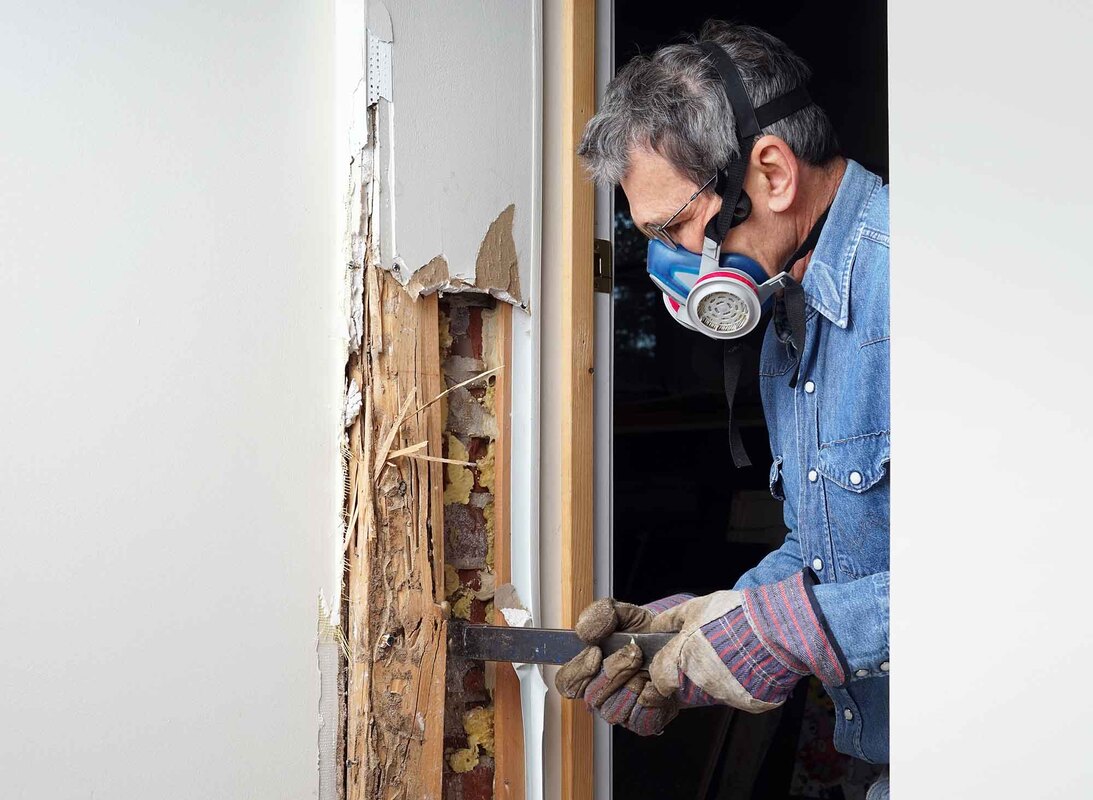

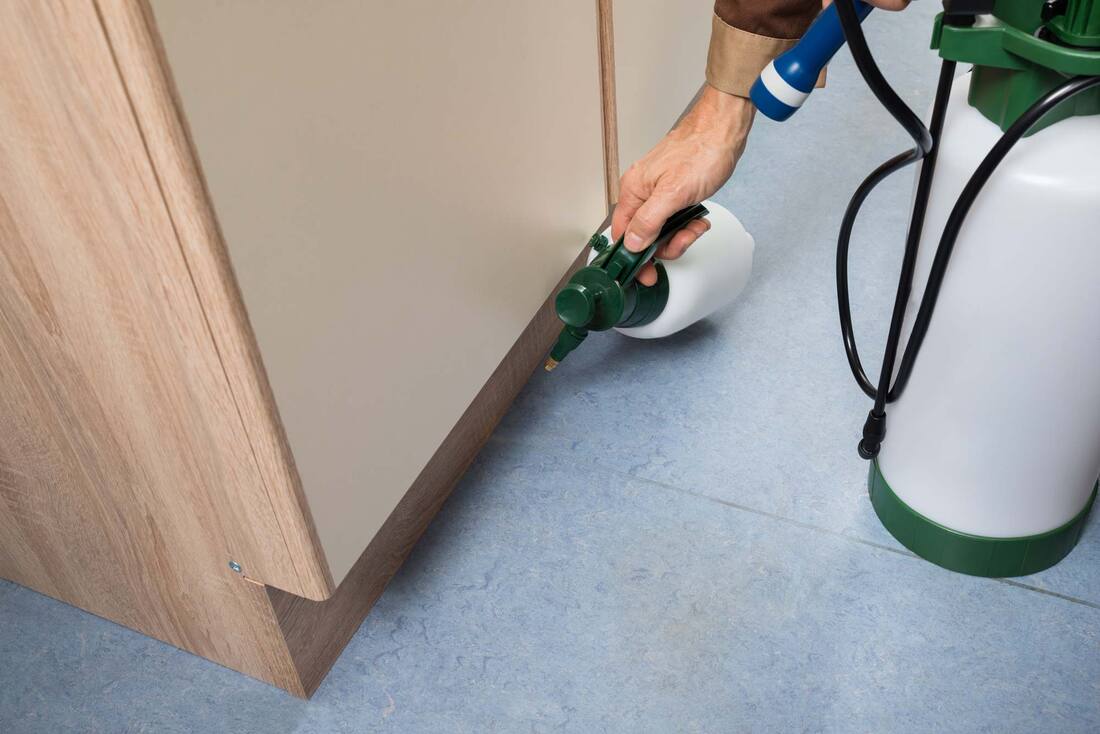
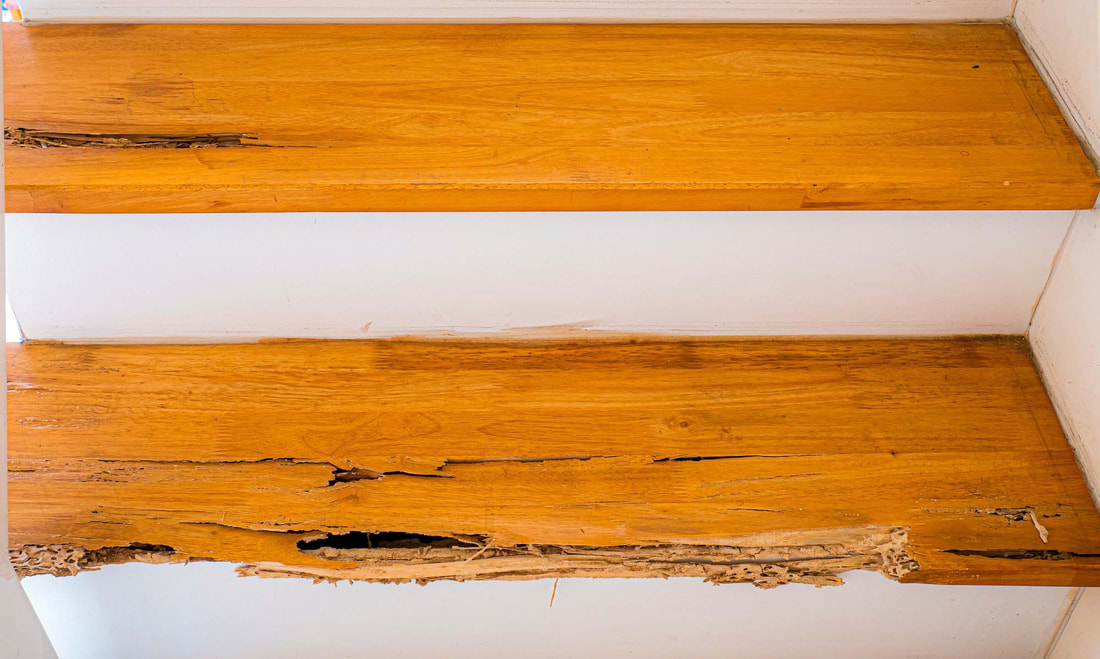
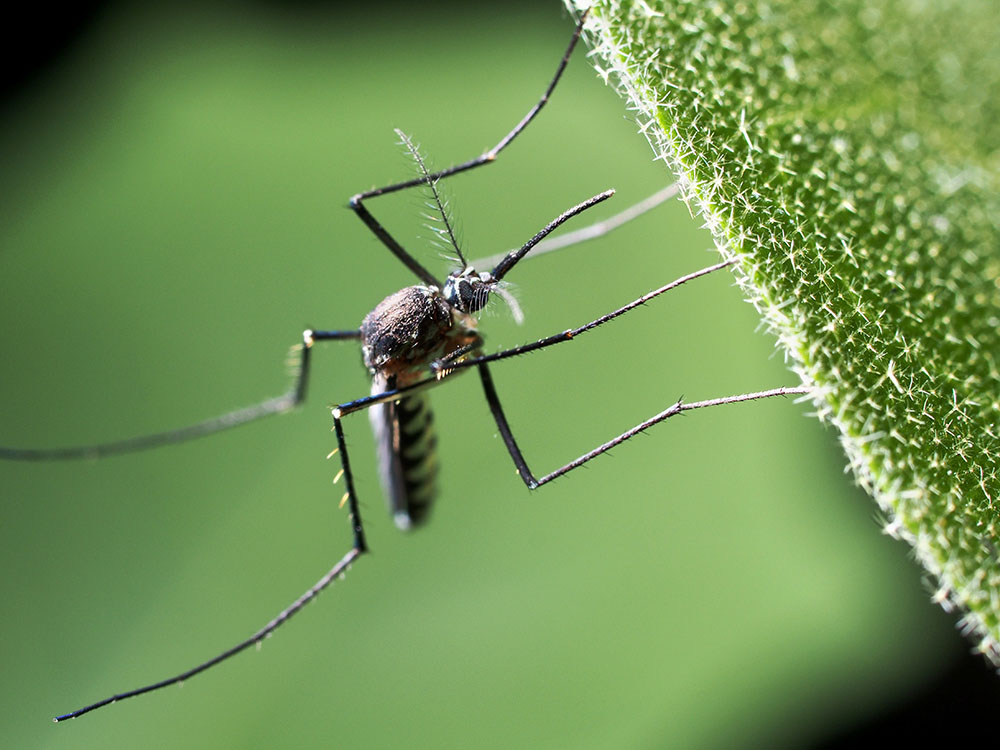
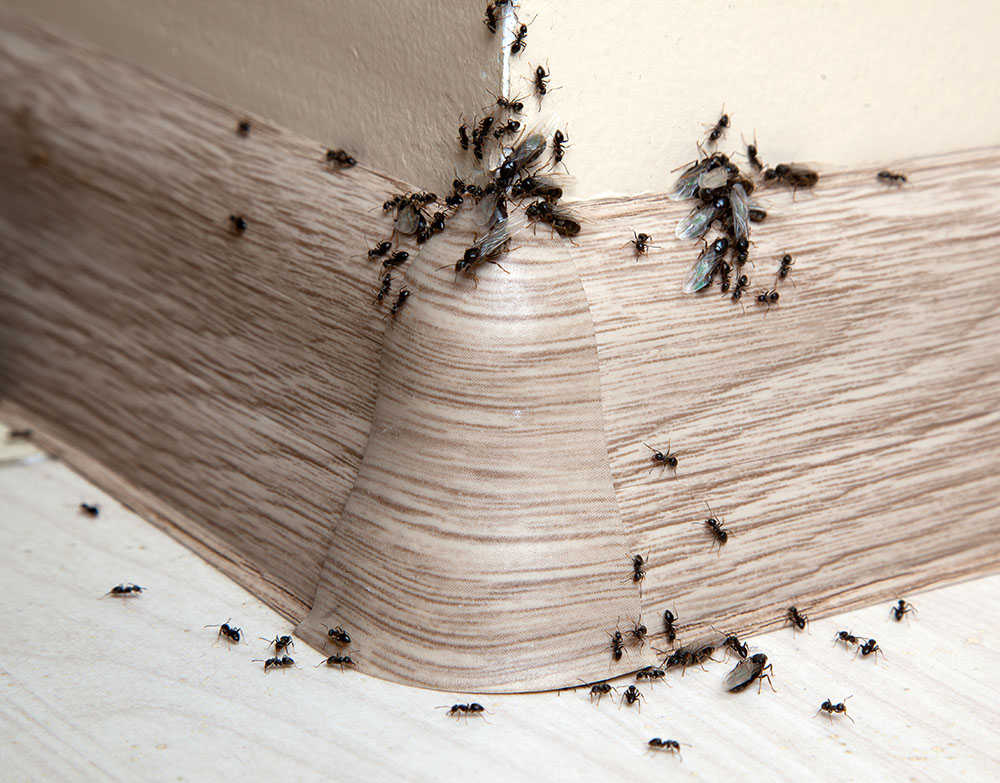
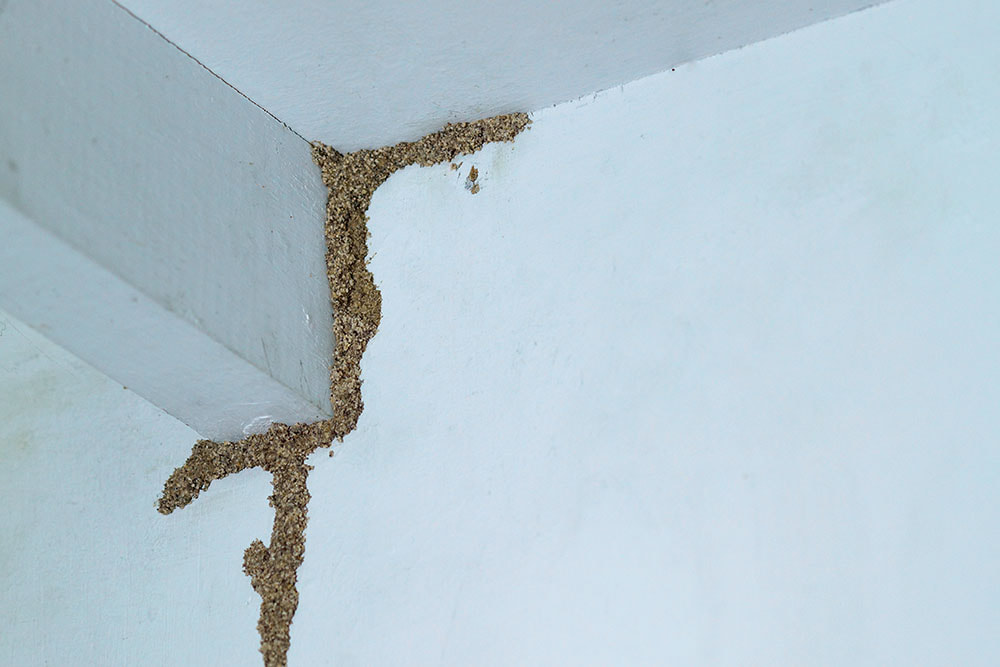

 RSS Feed
RSS Feed

